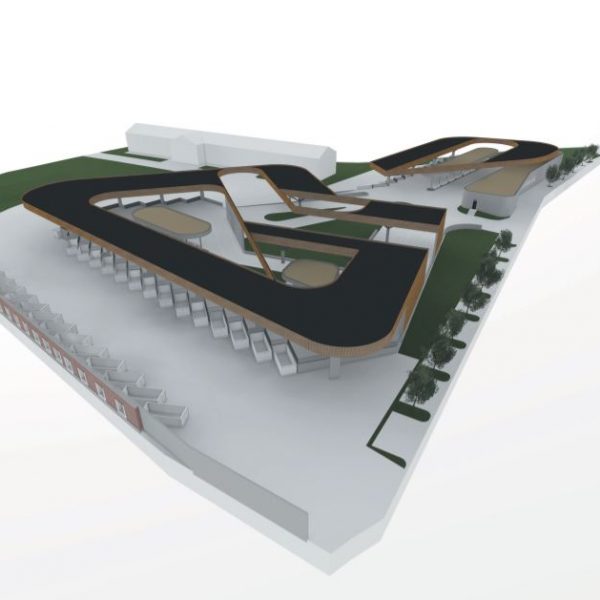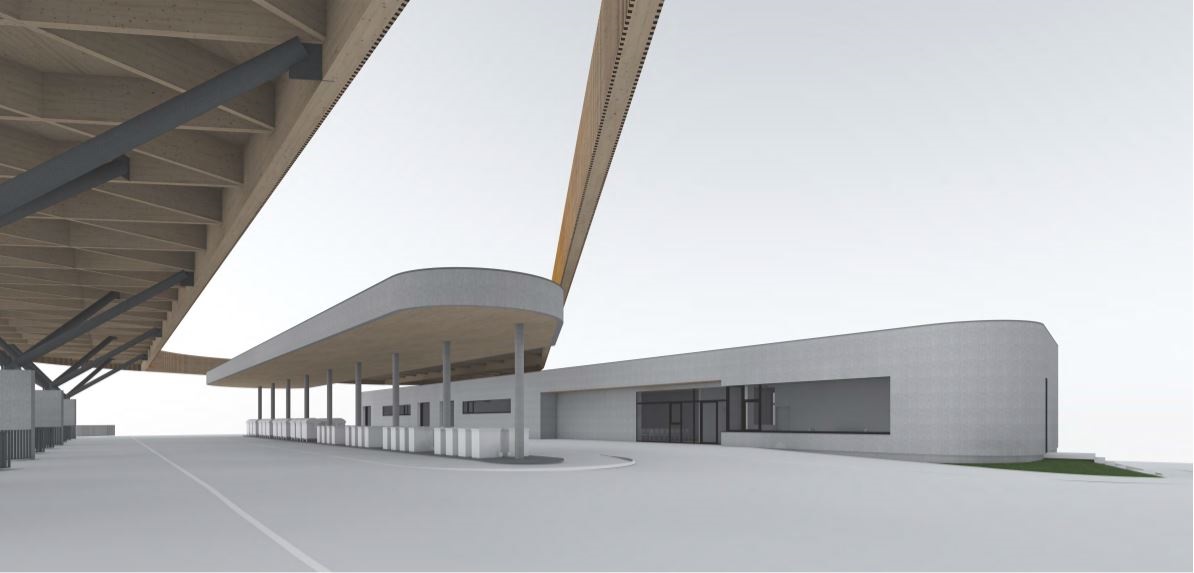This will be our new resource park Graz
Last year, the go-ahead was given for the construction work in Sturzgasse on the new, state-of-the-art Resource Park Graz. Holding Graz is investing a total of around 33 million euros in the conversion and modernisation of its site in the south of Graz.

The project
The existing Recycling Centre Sturzgasse will be replaced by a modern Resource Park Graz starting in September and will offer customers even more convenience in the future.
Around 400 employees of the “Infrastructure and Energy” division are employed at the Holding site in Sturzgasse. The 11-hectare site, which, in addition to the Sturzgasse recycling centre and the waste treatment plant, also houses the urban space division of Holding Graz, the waste water operation, Servus Abfall, the washing operations and the municipal workshop, is currently being completely “turned inside out”. In concrete terms, the location is being adapted to the latest standards, restructured and optimised for customers, especially in view of the population growth in the greater Graz area. The next milestone will be the opening of the new resource park in the second half of September.
Deputy Mayor Judith Schwentner: “I am pleased that a modern and customer-friendly infrastructure hub is currently being built in the south of Graz for the people of Graz, which also has the environment and resource conservation in mind in the sense of a liveable and sustainable city of the future. With the new resource park and the energy concept for the Sturzgasse site, which is geared towards alternative energies, the city of Graz is being effectively developed in a sustainable manner. This also includes the redesign of Sturzgasse and Puchstraße with new footpaths and cycle paths.”
Read more below the photo gallery!
More service for customers
Gert Heigl, CEO of Holding Graz: “A total of 33 million euros are being invested in the reconstruction and modernisation of the Holding location in the south of Graz for the people of Graz. With the expansion into a state-of-the-art location, we are optimally equipped for the future requirements in a growing city. The new resource park, which covers around 20,000 square metres, is another important milestone and at the same time the centrepiece of the underlying Sturzgasse master plan.”
The resource park, with an investment volume of around 9.8 million euros, is being built on the former site of the economic yard south of Sturzgasse. Almost all of the 20,000 tonnes of demolition waste that resulted from the removal of the 110-year-old building last year will be reused for the new resource park.
Tripling the total operating area
“The approximately 20,000 square metre state-of-the-art resource park in Graz will replace the existing smaller 6,000 square metre Sturzgasse recycling centre and will be available to our customers as of September. The current Sturzgasse recycling centre will continue to be used for the collection of problematic materials (batteries, accumulators, etc.). The expansion of the operating area, which is also necessary in view of the population growth, offers customers more space and at the same time prevents congestion when dropping off waste,” explains Alexandra Loidl, head of the waste management division.
In addition, the processes will be even more customer-friendly in the future: In the new resource park, the internal handling of waste and the delivery area are separated on two different levels. The delivery area is slightly elevated. This separation creates more safety and at the same time offers more comfort for the users.
Read more below the photo!
Significant contribution to resource conservation
In the future, more than 80 different types of waste will be separated and collected in the Graz Resource Park, thus significantly increasing the sorting depth. As a result, more waste can be recycled or materially recovered, which in turn increases the recycling rates.
The new Resource Park Graz will be structured in different zones:
- In the Re-Use Zone, still usable items such as textiles, furniture, etc. can be handed in.
- In the subsequent recyclables zone, customers can hand in paper, various metals, plastics, glass packaging, etc. free of charge.
- In the so-called residual waste zone, which is subject to a fee, bulky waste, building rubble, green waste, etc. can be handed in.
- As already mentioned, the free-of-charge hazardous waste zone will remain at the current location, where paint, varnish, electrical appliances, etc. can be handed in free of charge.
In the spirit of resource conservation, there will be, as mentioned, a separate ReUse Zone for the free handing in of usable items. Caritas is on board as a partner here, which will then sell the ReUse goods in the Carla shops. Deputy Mayor Judith Schwentner: “The collection, reuse and resale of ReUse goods are optimal ways to protect the environment by avoiding waste and also to act in a socially sustainable way.”
The new Resource Park Graz will be structured in different zones:
Recyclables zone
In the recyclables zone, customers can hand in the following materials free of charge:
- Waste paper and cardboard
- scrap iron
- Miscellaneous metals
- White and stained glass packaging
- Styrofoam packaging
- Plastic packaging etc.

Residual material zone
The following materials, among others, can be deposited in the fee-based area in the so-called residual waste zone:
- Bulky waste
- Construction waste
- Green waste
- old tires
- Plasterboard etc.

Problem material zone
The free problem material zone remains at its current location, where the following materials, among others, can be handed in free of charge:
- Paints
- Varnishes
- Electrical appliances
- Medicines
- Batteries etc.

Re-Use Zone
In the Re-Use Zone still usable items can be handed in, such as:
- Textiles
- Shoes
- tableware
- Books
- small furniture etc.
In the spirit of resource conservation, there will be, as mentioned, a separate ReUse Zone for the free handing in of usable items. Caritas is on board as a partner here, which will then sell the ReUse goods in the Carla shops. Deputy Mayor Judith Schwentner: “The collection, reuse and resale of ReUse goods are optimal ways to protect the environment by avoiding waste and also to act in a socially sustainable way.”

Clean energy thanks to a modern energy concept
The construction measures at the site are also accompanied by a modern energy concept that focuses on clean energy generation: Photovoltaic systems are being or have been installed on the large roof surfaces of the resource park, the new Stadtraum Süd hall and, already implemented, the municipal workshop. More than 350,000 kWh of energy can be produced annually in this way. The holding company uses solar thermal energy to heat water in the team rooms. E-charging stations for the Holding’s fleet of e-vehicles are also available.
In the course of the redesign in the south of Graz, the premises for the approximately 100 employees of the residual waste collection were also modernised. Since the opening at the beginning of the year, there have been new offices, social rooms and changing rooms for men and women on an area of around 600 square metres.
Video of the March 2022 walk-through
Videos of the construction progress
Figures, data, facts about the new resource park:
Investment volume: around 9.8 million euros
Area tripled from 6,000 to about 20,000 square metres
Significant contribution to resource conservation and increase in recycling quota through:
- additional collection fractions,
- increasing the sorting depth.
Improved convenience and service for citizens and avoidance of congestion through:
- Significant expansion of the area,
- increasing the number of delivery and drop-off points,
- two entry checkweighers (instead of one) in the fee-paying area,
- optimised traffic routing (e.g. roundabout and double lane delivery),
- additional pay stations at the exit,
- increased use of large containers.


